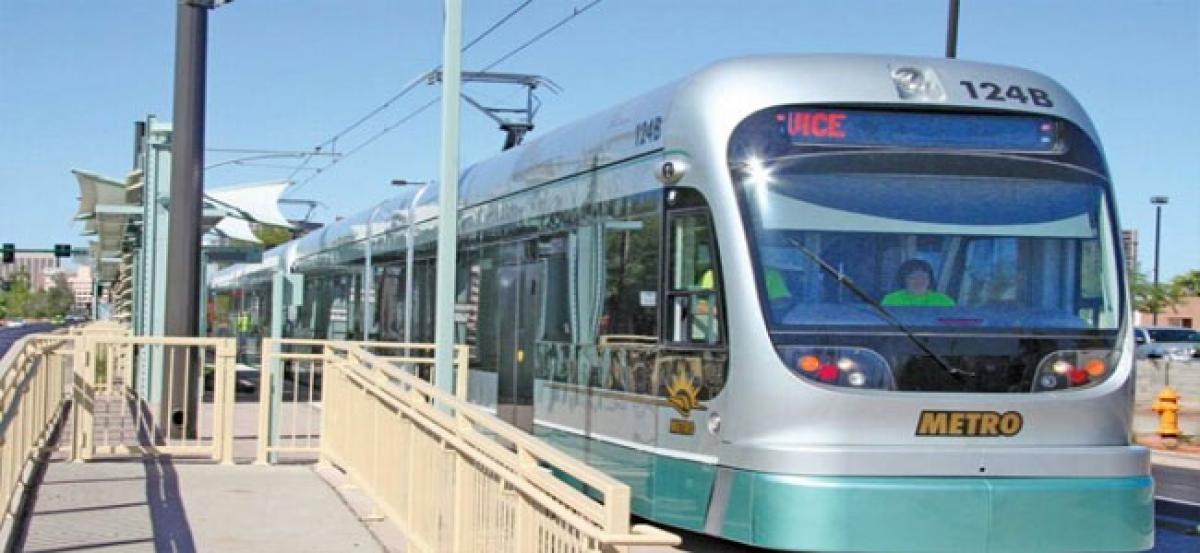Live
- Trump picks new secretaries for health and veterans affairs
- RPF launches ‘Operation Narcos’ to combat drug smuggling
- Modi will amend Waqf Act despite opposition: Shah
- Caste census empowers marginalised: Rahul
- Civic chief inspects Smart City project works
- PDSU flays govt apathy in solving students’ problems
- Contribution of tribals to freedom struggle ignored
- Modi dividing society: Pawar
- Downing Street says sorry for wine, non-veg food in Diwali menu
- Lokesh hailed for withdrawing cases against employees
Just In

The state government’s decision to adopt Light Metro for Vijayawada is attracting criticism from urban transport experts, who opine that it will be grossly inadequate and will remain useless when Metro sees the light of the day in the capital
Amaravati: The state government’s decision to adopt Light Metro for Vijayawada is attracting criticism from urban transport experts, who opine that it will be grossly inadequate and will remain useless when Metro sees the light of the day in the capital. They also argue that change to Light Metro will delay the project by at least 18 months to two years, as the technology is not available in India and cost difference will be meagre 13 per cent between Medium Metro (suggested by DMRC) and Light Metro.
Highlights:
- Lack of technology a major hurdle
- Experts project hike in estimates due to delay
- Express doubts over Centre giving nod to the project
As differences cropped up with Delhi Metro Rail Corporation (DMRC), state government cancelled the medium metro project and took decision in favour of Light Metro following a feasibility report submitted by Australian expert Edward Dotson, a few days ago.
As per a report, cost for light metro is Rs 199 crore/km and it is Rs 246 crore/km for Metro, but it will not possible to begin light metro works till January 2019 as Detailed Project Report is yet to prepared. “Delay in construction will cause project cost escalation by 5 per cent per annum and the cost difference will come down to 13 per cent between light metro and medium metro” said expert on condition of anonymity.
As the technology of light metro is not available in India, cost will escalate due to importing. “Major parts of Metro are indigenised and coaches are manufactured in India and one among them in Sri City of AP,” the expert said.
Most importantly, light metros are less capacity with 750 passengers per three car train but it is 973 passengers for metro. “21 train sets of light metro with 2.75 minutes headway, can cater maximum capacity of 15,750 passengers per hour per direction transport (PHPDT). But the PHPDT is 38,920 for 40 train sets with 1.5 minutes headway,” he said.
It should be recalled that the light metro project planned for Bangalore city in 2007 was shelved recently in favour of medium Metro. “If Centre does not approve the proposal, the entire cost will have to be borne by AP and will end up investing more,” he said.
While Dotson recommended 35 acres for light metro deport, it is 40 acres for Metro also but DMRC recommended another 20 acres for staff quarters and other needs. The expert also said as Light Metro coaches were lighter, more numbers must be operated increasing energy consumption and manpower. “Hence there will be no reduction of 22 per cent in operation and maintenance cost (as it was said in report of Dotson)” the expert said.

© 2024 Hyderabad Media House Limited/The Hans India. All rights reserved. Powered by hocalwire.com







